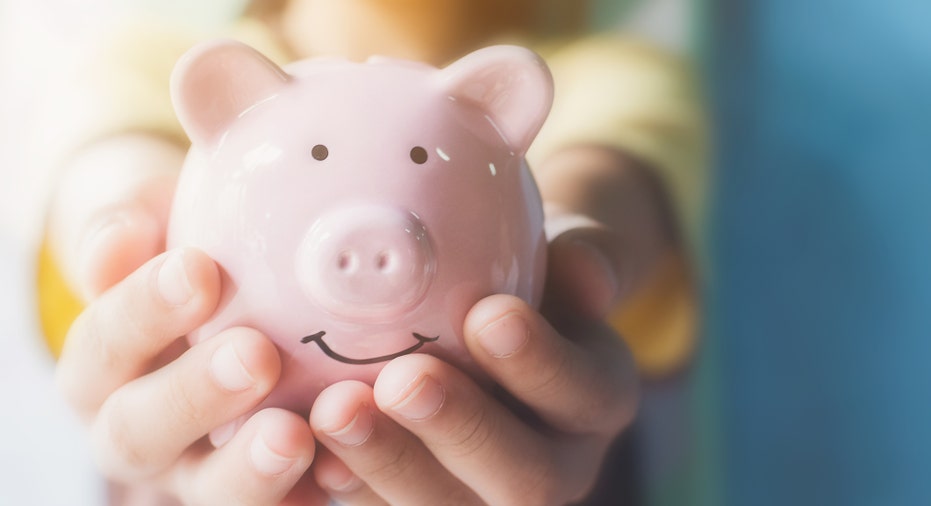Personal loan rates are getting even lower — here's why

Now could be an excellent time to consider taking out a personal loan. (iStock)
Personal loans are one of the most flexible forms of financing and can be used for anything from consolidating debt or a significant expense like a car repair or medical bill. This type of loan already has pretty attractive interest rates — but the offerings are just getting better. Annual percentage rates on personal loans are even lower now, thanks to the Federal Reserve's rate cuts.
In March 2020, the Fed slashed the federal funds rate to near zero to help the economy through the start of the coronavirus pandemic. Personal loan rates currently range from 4.99 percent to 36 percent. What goes down can go up, and it can help to understand how the Federal Reserve funds rate can affect your personal finances.
How to get the best rates on personal loans
If you’re considering getting a personal loan, the first thing to do is to visit an online marketplace like Credible to compare loan options from multiple lenders at once. Credible can help you find some of the best rates available to ensure you're meeting your personal finance needs.
EVERYTHING YOU NEED TO KNOW ABOUT PERSONAL LOANS
You can borrow up to $100,000, but rates can vary greatly. Lenders set the rate they offer based on a few criteria, including:
- Credit score
- Debt-to-income ratio
- Income
Credit score
One of the primary considerations is your credit score, which is assigned by reporting agencies such as Equifax, Experian, and TransUnion. This number helps lenders assess risk. Your rating will be based on your outstanding balances, repayment record, credit mix, and account length. Credit scores range between 300 and 850, and higher scores are considered better.
If you're on the higher end, then you may be ready to move forward — just plug your score into Credible's free online tools, enter your loan amount and find out what kind of rates you qualify for today.
HOW MUCH DOES A PERSONAL LOAN AFFECT YOUR CREDIT SCORE?
Debt-to-income ratio
Another determining factor is the amount of debt you have compared to your gross income. This number is called your debt-to-income ratio, and it includes loans, mortgages, leases, and credit cards. According to the Consumer Financial Protection Bureau, mortgage lenders look for debt-to-income ratios at or below 43 percent. For personal loans, lenders' standards may vary, but the lower your ratio, the better your rates will most likely be.
Income
Lenders also look at your income and 24 months of your employment history to assess how you will be able to pay the loan back. The term of your loan can also impact your personal loan interest rates. Generally, the longer the loan term, the higher the rate.
Don't worry about having to navigate personal loan options on your own. Credible can help compare personal loan companies (and hopefully land you some of the lowest rates).
9 OF THE BEST PERSONAL LOANS IN 2020
Knowing that the Fed can raise and lower rates can help you to make sound financial decisions for your future. Now may be the best time to lock in a fixed-rate loan, saving money and avoiding the potential of making mistakes.
Will interest rates remain low?
No one can be sure what will happen with the economy, but for the foreseeable future, rates should continue to stay low. After the most recent meeting of the Federal Open Market Committee, the Fed announced plans to maintain the target range for the federal funds rate at 0 to .25 percent.
“The Committee expects to maintain this target range until it is confident that the economy has weathered recent events and is on track to achieve its maximum employment and price stability goals,” according to a statement.
If you're looking to secure a personal loan, then you should consider taking one out while rates are low. Credible can walk you through the process without any hassle.
THE BIGGEST MISTAKE TO AVOID WHEN TAKING OUT A PERSONAL LOAN
How does the Fed interest rate affect personal loans?
One of the Federal Reserve's two primary purposes is to keep inflation in check. The Federal Open Market Committee meets eight times a year to discuss the current state of the economy. The Fed can adjust the federal funds rate to impact the economy by lowering it, raising it, or keeping it as is.
Lowering of the Fed funds rate can prompt banks to lower rates for customers to entice them to borrow. This benchmark rate impacts the prime rate, which is what banks charge their best customers. In turn, the prime rate impacts what consumers pay for financing products, like mortgages, credit cards, and personal loans interest rates.
Some current personal loan interest rates may be impacted, as well. If you have an existing fixed interest rate, you’re locked into your rate for the term of the loan. But if you apply for a new loan with a fixed interest rate, you can take advantage of low rates. Also, if you have an existing loan with variable interest rates, the interest you’re charged will rise and fall with the prime rate. If you take out a new loan with variable interest, you can likely expect to see your interest rise within your loan term since it's at near-record-low rates right now.
If you're considering getting a personal loan, you can visit Credible to use their personal loan calculator and find the best rates for your budget.



















